Wednesday —Again Books and Bazaar
You’re to meet your mother and sister and two uncles way up there, the far edge of Indian country, everyone’s decided, the day after tomorrow. You’re to bury some bits and pieces of your grandfather near some rumors of a railroad and a cemetery you’re not sure how to find. Halfway along the caretaker’s bus route, explains your mother. She’s carrying her father’s remains in an ancient wooden box fashioned after a duck. Your sister speaks highly of the duck’s provenance; later you learn its other names, the tine (teen-ah), the svepask. And that it probably came from fjord country, a port city called Bergen where everyone’s ancestors boarded ships for the New World, after scouring the bazaars for little memories of home. Wild ducks, for instance. And that collectors prefer another name—the sound of each extremity finding its warped groove.
On the phone, at the only used bookstore you find in Rapid City, where you’re a little desperate for something to read at the motel, and where you finally settle on Indian Oratory: Famous Speeches by Noted Indian Chieftains (1971), your mother sounds nervous, hard to make out. Your whispers touch on other titles: North American Indian Landmarks: A Traveler’s Guide (1993), and Shale Gas: The Promise and the Peril (2012), and a stern-looking manual on growing small, invincible vegetables in the desert. But you put these aside. You’re looking for a copy of Dakota: A Spiritual Geography (1993), which your mother is suddenly reading. Someone has just bought the last copy, says the woman at the counter. You’ve read a lot of books about Indian country, but your mother has only this one, and you’re not even sure Kathleen Norris understands what our people have done.
Three days later, high up in the attic of a parsonage where God knows how many forefathers let loose their first cries, you will brush dust and more dust from the crimson cover of Cat–Dog, the third volume of Modern Concise Encyclopedia (1941). There in the waning light, just after DAIRYING and DAISY and half of your mother’s father’s mother’s recipe for lemon pudding, you take down the entry for DAKOTIAN. It’s right there, somehow, that you begin to worry. About a vague sense of geology, and whether this is all your family might ever really know about “Aurelia”—your yellowing notebook, the countless minor saints cast in gold, the colorless sourness of a place we still insist on calling our own.
Just now, your mother has begun to worry about the school-bus-driver-caretaker’s directions to the gravestones. The part about crossing the tracks and following a gravel road past the Gustafson homestead, plus two cornfields for another half mile. Also about the svepask making it through security, as carry-on baggage. Is there a form to fill out for this kind of thing? What if they want to look inside?
~
Circa 2013 — “Aurelia”
You can picture your father planting a dogwood tree in the front yard, as a kind of distraction. And the chaplain adding his blessing, and the other miracle workers dismantling the reclining bed, and your mother bringing you into the TV room to visit the duck. It was wrapped in a green velvet cloth, tucked into a corner. There was a filing box, too. A whole nest of manila files marked “Aurelia,” explained your mother, along with some photographs our ancestors had developed at Safeway. Guarding this collection was an old piano bench, something soft to keep the blood from swelling his feet. Your mother had tried everything. She would be in the kitchen if you needed anything. You put the duck away, and reached for its nest. You took a seat on the bench, in the way she must have angled her knees and shoulders each morning that spring. You remember her book of onion skins open to Corinthians. You can’t recall the passage marked in blue, only the shape of her bowed head asking Paul about that word.
“Aurelia,” your grandfather whispered once, arching his antennae toward your own, when the phone company wanted to know his password.
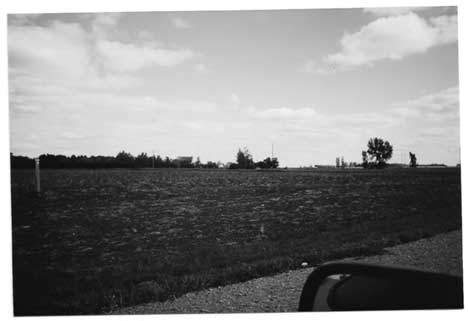
Wednesday — Shuttle Van
Fred doesn’t remember the teacher who abandoned his Explorer in the little ósmaka. Out by the airport, last spring? Nothing. Fred’s driving the same white van today, and he tells you to ride up front again. You ask about the Kruse family down on Highway 44. Fred hasn’t looked in on Phil Kruse this year. Lots of old money in guest ranching. Phil drives a Chevy but Fred can’t say what year. He might just as soon stop for an SUV digging ditch in a blizzard, if you follow.
Fred’s old man ran a guest ranch, back before the war. A Montana spread that butted up against those chalk white hills, you know the ones? Nothing much grows on clay. Dad did like the shape of them, the way they sort of take after a sleeping woman. No, Fred hasn’t been far from these Black Hills and this piece of shit van for some time now. Did get down to Riverboat Days with the lady the other weekend. Lady’s a teacher too, matter of fact. Transitional studies, they call it. Cooking, cleaning, whatnot. Damn them flies this time a’year, enit?
~
LEMON PUDDING — 5 cups water
1½ cups sugar
the yellow of 2 lemons
1 tablespoon butter
the juice of 3 lemons
Put in water and boil and after boiling a few minutes put in 5 tablespoons corn starch (stirred with water before). Then the yellow of 5 eggs stirred good before putting them in. Beat the white and stir in slow, [sic]
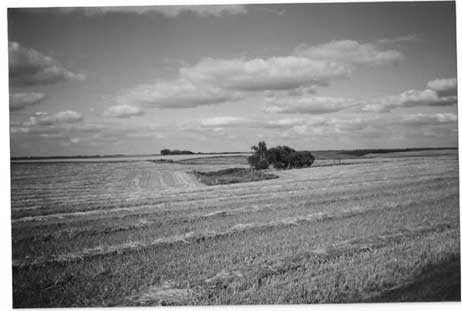
Circa 1928 — “Things We Did in Town”
Shortly after my last boy’s birth I took him to see the doctor in another town. I believe the doctor’s name was Holliday. I believe the doctor wanted to see my boy because he had caught something on the wind in the coulee, some infection that had spread to his eyes. The doctor put drops in my boy’s eyes. Later I noticed that my boy’s right eye did not follow his left. I’m certain this was caused by the doctor—bad medicine in those eyes, I’m certain of it. I had what they call a nervous breakdown. I do remember telling my boy that if only I’d not taken him to the doctor, he’d be all right. He’d not have that lazy eye. People tell me that’s not the reason for my boy’s failings or my own, but I don’t know. One person once said to me that they had to figure out which eye my boy was looking at them through.
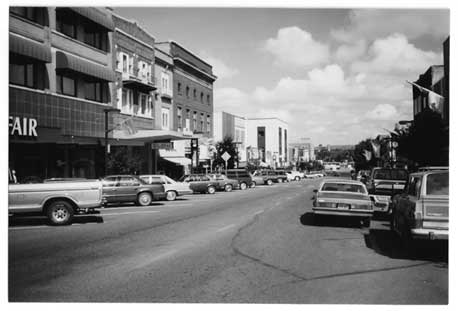
Wednesday — Stromer’s Storage
At the big gravel lot, the office is locked but Judy has left your keys under the mat, with a receipt and sorry we missed you scribbled in blue. Three months of parking out here on the edge of the imagination runs about $200, for which you’re grateful, but only after checking the windshield. The cab has lost some paint to last month’s hailstorm, but at least the glass held out. So has the battery, but just barely. You power down the windows. You give the engine some gas. You whisper a prayer of thanks to Judy, and then something small and yellow begins dive-bombing the windshield, filling the nothingness with a sound you haven’t heard in 20 years. It’s coming from the driver's side mirror. Giant yellow wasps—streaming from the housing, pouring into the cab, knocking themselves silly against everything that shines in the August heat.
You paw at the console, forcing one window back up, the other down. The old motors groan, sucking down the last of the juice from the hood. It seems to take a whole minute, but finally the nest sits behind glass, like something dangerous in an arboretum. You can see it more clearly now, wrapped around his furrowed brow, your chin, our reflection on three sides. Each muddy cavity pulsing with a tiny ticking missile. More or less the same picture of the Badlands your children’s children will carry forward, in your mind’s eye. Welcome, says the sign on 44.
At the Walmart north of Pine Ridge, you buy the tallest, yellowest can of insecticide you can find, and stand back about 10 feet. As the foam works its way under each little abdomen, the missiles fall to earth, one and two and then three at a time, gyrating against the asphalt in what seems like pain. A woman dragging a kid too old to be riding in a giant plastic cart hurries past this scene, not looking your way. But the kid does, and begins to point, and then to cry.
~
Circa 1935 — “Fact from Fiction”
The coulee was not very far from our house, actually just a few blocks' distance from the back of our house. It seemed very far and very deep to me in those days. I remember going down there once with my brothers and cousins. This was the place where the chokecherries grew from which my mother made jam and syrup. As we made our way down the path, we came across some white bones. A horse probably but it looked like a dinosaur. I was told that this horse got caught in quicksand and couldn't get out so it died there. There were dark patches of sand and I was told that if you stepped into them you would sink down and never be seen again.
I remember how frightened I was of the coulee. I dreamed about it that night. I have perhaps created some pictures in my mind of things that never actually existed, but to me they are real and I would never be able to separate fact from fiction.

Wednesday — Super 8
Back at the motel, after some CNN and almost out of habit, you reach again for the nesting box. You remember spreading its contents on the floor, running the tips of your fingers over other Gustafson fingerprints, reciting your favorite fragments aloud. The Safeway photos have already begun to fade—big skies and a curving gravel road that might look better in sepia, or maybe black and white. The manuscript is undated, with a table of contents so faded, the black ink looks almost blue. High up in the header, on almost every page, there’s an obscure number—2160, or maybe 21600. Another password to another century, or a random bit of typesetting? Something about the sequence recalls your grandfather’s half-lidded smile, his paint-splattered radio singing from the staircase, and a forgotten game of demolition—knocking down the rotted chimney of a little rental on the Salish Sea. And that gets us to wondering. How to enumerate the memory of such an afternoon? Can it reinvent the clamor of that day? The heft of the tools in your hands, the strange markings left on the walls?
Beneath hundreds of pages, with staples rusting and chapters missing, you fall into a deep and haunted sleep—full of famous speeches by noted Indian chieftains, you told us later, and the unwritten half of a storybook the writer never titled, set in zip codes we may never find on maps.
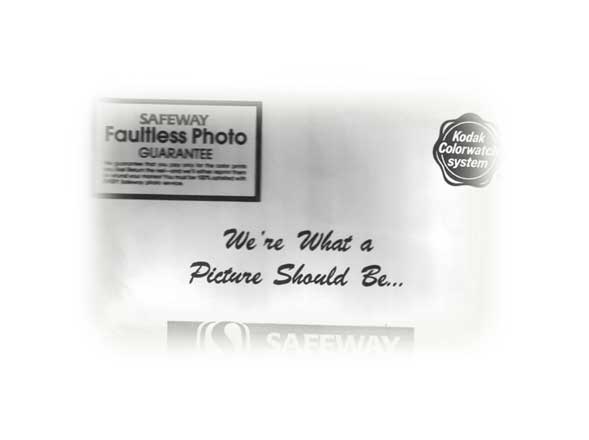
Circa 1935 — “Mother and Father”
The town shrank to about two city blocks long and another two wide. In the early days there were other stores: a bank, a pool hall, a hardware shop. I only remember my father's store, Aurelia Mercantile Red and White Food Store. The elevators and the depot were located one block south, on the railroad line. The first seven years of my life were mostly contained in those four blocks, with much of the time spent walking or running between Mother’s house and Father’s store. The streets of our town were dirt and the sidewalks cut from rough planks. Canadian lumber, I think it was. I often ran barefoot and crying to Father, asking him to pick slivers from my feet. Like his ledger book, like his trust in his neighbors in those years, Father's patience for crying seemed infinite, and then one day was gone.
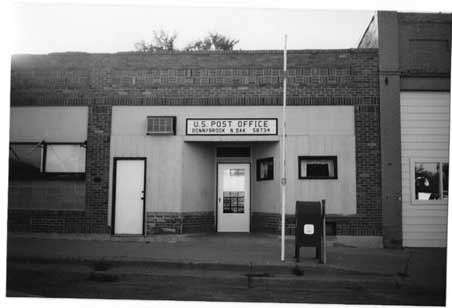
Thursday — Route 49
The big yellow oil rigs have hammered North Dakota’s highways down to the ruts of pioneers, unending skins of pockmarked pink. East of Lake Tschida and just north of the state line, at the first of what will feel like a hundred repaving projects, the girl waiting for the next convoy is eating lunch from a bag of sunflower seeds, next to a whole field of sunshine. You’re alone. She rests a tattooed elbow on the nest, and doesn’t ask about the foam. She cranes her neck toward the book wedged on the dash. Then she studies your face. Hers is broad and blank, with wisps of neon hair under a hard hat and little streaks of tobacco at her lips. She’s the best thing you’ve seen all day, and you tell her so. She asks if you’d like your gas cap screwed in.
How in the hell, you wonder—a familiar feeling. But then you know, and even now you can picture it. The last filling station in Sturgis, under the giant rusting sculpture—something like a ghost welded to a chainsaw welded to a Harley. FULL THROTTLE SALOON, said the ghost. You took pictures of the next sign on the highway, too. Red, white, and blue. It said WELCOME TO HOMELAND OF THE NORTHERN CHEYENNE PEOPLE.
The girl screwing in your gas cap says it’s the most work she’s done all day. She slaps the little door shut. She comes back to the window. You’re about to ask her name, and how much the roadwork is paying, when dust begins to cloud the place where a hundred thousand sunflowers meet the sky. The girl’s relief is driving another big rig, the same color as the field. He gives you a look, but doesn’t say anything. He turns over a paint bucket. The way you tell it, he digs around in his pocket, but decides instead on a long drink of something bright and caffeinated.
~
Thursday — Transcontinental Railroad
In the shade of a place called Faith that looks tall and leafy enough to have been planted in a time no one can remember, we pause for a sandwich—long enough to hear the Explorer’s engine begin to tick. Through the windshield, let’s imagine one of the spit-polished spurs that no longer shines. And the face of the worn-out woman, from the deli down the road. She’ll tell you, you told us later, that Faith takes its name from the kind of religious devotion that kept good Christian people, whites and Indians alike, alone and alive on the prairie all those years, before Rockefeller came the way of our ancestors, yours and mine both. But this too is probably a false picture. This town, like Isabel and maybe Aurelia, shares its name with debutantes—the daughters of Percy, the transcontinental tycoon. In pictures, Percy A. Rockefeller’s thick jowls and small worried eyes remind you of a picture book. Right there on the shelf in the TV room: Percy the Small Engine (1956), about a shape-shifting locomotive who sometimes prefers the look of a green caterpillar with red stripes.
What has become of your daughters? The question ripples in the heat. The caterpillar rears above the wasteland. And the feeling that bears down, in the face of this unspeakable silence, resists description. Still, you said—years later, riding shotgun around Wounded Knee, I think it was—we can try. What is the sum total of our ambivalence? Can we find apology for the dispossessed in the agony of the deli woman’s eyes, that same look we Gustafsons wear in prayer? Or have these Great Northern towns become oblivious to empire-building, like the laughing girl crossing the double-yellow just now. One arm around her Pine Ridge friend, the other beckoning to the wheeled engines, the white boys pushing every shape and size.
~
Circa 1900 — “A Personal Report and a Little History of the Village of Aurelia”
One day Uncle Maag came into his home all excited and told his wife that they were going to build a branch of the Great Northern Railroad out their way and that it would come within a half mile of their claim. The next day he came home with still more exciting news. He said they were going to build a railroad station just a half mile south of their home. He heard that they would call the village Aurelia. Aunt Christina said that she did not like the name Aurelia as it sounded Catholic but when she heard that the word meant “golden” she felt better about it. During my time there was talk of changing the town’s name to Gustafson, for nearly all the business owners were Gustafsons. These early pioneers were surely a devout people.

16 June 1870 — New York City
You do not know who appears before you to speak. He is a representative of the original American race, the first people on this continent. We are good, and not bad. The reports which you get about us are all on one side. You hear of us only as murders and thieves. We are not so. If we had more lands to give you, we would give them, but we have no more.
~
Thursday and Friday — Routes 49 and 200
The road from Rapid City to Minot first aims for Northern Cheyenne country, then wanders east like a surveyor in charge of a census. It cuts through Cheyenne River and Standing Rock. It traces the floodwaters that drowned the villages of the Mandan, the Hidatsa, and the Arikara in 1953, after the Army’s engineers sealed the gates of the Garrison Dam. These reservations aren’t marked on my satellite map. They appear as blank rectangles, trapezoids, a triangle wedged awkwardly against the Dakotas on one side and the swollen shore of the Missouri on the other. The shapes tend to disappear as the viewer zooms outward, anxious perhaps for the Interstate, for vacancy and free continental breakfast.
Red Cloud, the Plains warrior whose campaign against the Army united the Lakota, the Northern Cheyenne, and the Arapaho in the 1860s, fought and outlived most of his enemies in this middle country. You stared at his portrait once, you said, for a whole afternoon, long black braids and a tunic fringed with beads. And again that summer at the mission school in Pine Ridge. But what we remember looks nothing like the man the New York Times describes in 1870.
“He has spent his life fighting the battles of his people,” reported the Times, “and one day he is transplanted to Cooper Institute, and asked to put on a clean shirt, a new waistcoat, a high crowned hat, and then make a speech.”
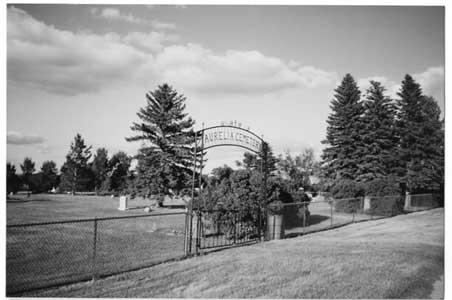
Circa 1963 — “People Worth Remembering”
The Swanstroms were known to drink. Stefan was the boy closest to Roy’s age. All that I can remember about him is that his breath always smelled like Campbell's tomato soup. From time to time Chip and Roy and I would try to get close enough to check to see if it still smelled like soup, and it usually did. We played from time to time, but because my brothers and I were so close, we probably had little reason to walk three whole blocks to Stefan’s place. I do remember a truck roaring down the street one day, kicking up all sorts of dust. “There goes one of those Swanstroms again,” said Mother. “They'll kill someone yet.”
When Chip made the first trip back—’59 or ‘60, I think it was—he told me they had moved away. He told me that Stefan’s place stood empty like much of the rest of the town.

Thursday — Route 200
Farther north, the convoys become automated. Outside of a town that my map calls Pick City, you’re the first in a line of rigs parked at a stoplight, waiting for something to come over the hill. Away to the south, in the viewfinder and the rear-view mirror, you can make out dozens of shadows still on the clock. Twos and threes at some wheels, but mostly lonely young men with cigarettes hanging low, their left arms coming up for a drag, for a tap, for a flick of the butt into the ditch. One man’s smoke clouds the next man’s profile, and then the next, so that we’re transported briefly to a hallway: one of the dust-covered trailers full of paneled mirrors and cheap Chinese furnishings that decorate whole acres of trouble on wheels, at the state university some 500 miles distant. You’re due to start another year of teaching on Monday. Some of these boys might be headed there tonight. No matter how you crane your neck, you can’t see where this train comes to an end.
The engines begin to rumble. The light changes to green. Nothing comes over the hill.
~
Circa 1870 — Minot, North Dakota
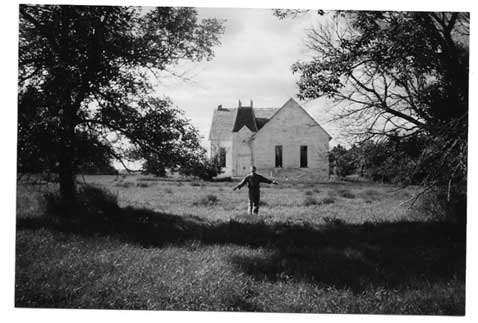
16 June 1870 — New York City
I have sent a great many words to the Great Father but they never reached him. They were drowned on the way, and I was afraid the words I spoke lately to the Great Father would not reach you, so I came to speak to you myself; and now I am going away to my home. I want to have men sent out to my people whom we know and can trust. I am glad I have come here. You belong in the East, and I belong in the West, and I am glad I have come here and that we understand one another.
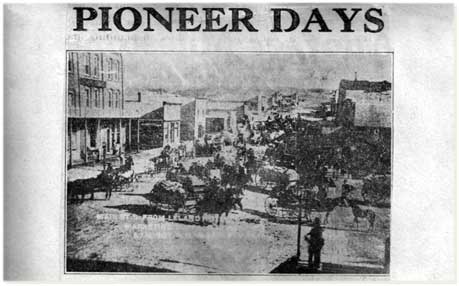
Friday — Lake Sakakawea State Park
At the cabin on the shore of the lake, there is a single bulb burning on the porch. You’re late, on account of the stoplights and a long conversation with your sister about the scarcity of rental cars in Minot. But then like magic, the knob turns. The park ranger has left the door open, and a key on the bench where you park groceries, insecticide, Famous Speeches by Noted Indian Chieftains, and a new snap box, from WalMart. Tomorrow’s the big day. So tonight you shuffle the pictures: gravestones, long guns, linoleum, fuel pumps, mailboxes, buffalo bones, even a giant church bell—the only thing God left behind in Aurelia, you once heard an old woman say.
With the morning light, says your notebook, comes the sound of waves on a shoreline hidden in the cottonwoods, and the possibility of something singing beneath the floorboards.
~
Circa 2011 — Gypsy Indians
Kindhearted boys, those Gustafson brothers, says the old woman, on another page. In the big family albums, there’s a clarity in her shining eyes that I can’t read. Once, over dining room coffee back in Washington, before his feet begin to swell, you asked your grandfather about the faraway place he knew like yesterday, and whether it was home to any tribal families. Could Indians fleeing trouble down south be found shopping at his father’s mercantile, you wanted to know. Your old man considered the word Indians for a moment. Then he told another story without pause. “I’m glad you asked,” he said. “Because we heard from childhood that when the Gypsies came to town, everybody had to go and hide. I remember the day that the Gypsies came and we all ran under our beds because we heard they would steal children.”
Later, over coffee at your grandfather’s memorial, high up in a church mountain camp where signs still tell of lava flows and tree rings and other magnificent contours of the Lord our God’s design, you asked your great uncles, Dennis and Roy, the same questions you put to Great Grandpa Chip. No Indians in Aurelia, insisted Dennis. Oh sure, 100 years before our time, said Roy, but with less certainty. Remember the stonework, the little heaps of broken rock you might find out there on the edge of the pasture?
~
DAKOTIAN — A formation of the Lower Cretaceous series in the U.S. The rocks, mostly conglomerates, clays and sandstones, cover a vast area extending over the Great Plains from Texas into Canada. They are of undetermined origin.
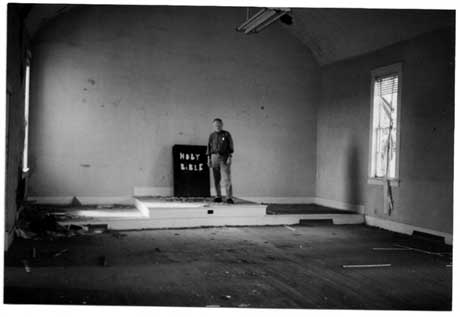
Circa 1936 — “Gypsy Indians”
I remember the day the Gypsies came to Aurelia. I had heard about the Gypsies before and how they were known to kidnap children and take them with them on their horses and wagons, never to be seen again by their parents. I'm not sure where I was or what I was doing when I heard the cry: “The Gypsies are coming!” But I've never forgotten that cry.
My brothers and I ran home. Mother told us to get under the bed, but we had to have a look. Sure enough, as we peered out the window we could see the wagon train and the many horses. They were what you call painted horses. They were beautiful. There were too many horses to count.
The first thing the Gypsies did was to head toward my father's store to go shopping. If I remember right, my father had asked some men from Grandpa's farm to come into the store and help him watch so that the newcomers wouldn't steal anything off the shelves. Most Gypsies have dark hair, and I knew then that at least one of their many children had been kidnapped because there was a redheaded boy in the group. I could see the redhead from the window, but he couldn't see me. I stayed by the window until the wagons were loaded and over the hill and the sound of horses had gone.
I cannot attest to how much of this is fact and how much has been created by a fertile imagination. You should ask Dennis and Roy about this. No matter where I see people on horses or hear their cries, I remember the redheaded boy.
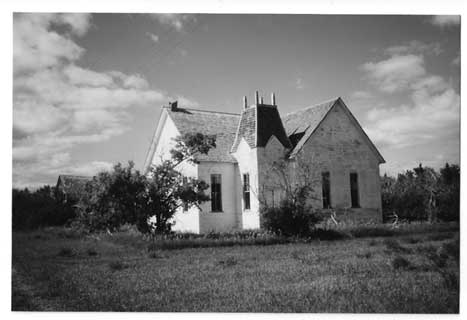
Saturday — Aurelia, North Dakota
The school bus driver is named Herb. He’s waiting for you in the field by the tracks with a posthole digger and a long shovel and two smiling Gustafson cousins you don’t recognize. Your mother removes the wooden box from the trunk of the rental car, and then her brothers wrestle to the ground yet another box, a kind of plastic sarcophagus with rubber seals and fancy steel pins that turn very slowly, with a bicycle wrench. Herb has cut the sleeves away from his work shirt, and his brown arms work the sod quickly, everyone staring. Your uncles take their turn, and for a while you try, too, but the man with the tools has been doing this longer than any of us can understand.
Afterwards, Herb bows his head. He doesn’t care for speeches, would rather show you pictures of the famous lawnmower none of the kids from fracking country will drive around the cemetery, not even for cash money. Herb unfurls a map from a cardboard tube and points his flip phone at the other graves he maintains—too many to count, spread across three counties. So many newcomers burrowing underground, it looks like Swiss cheese.
Ronny and Gail Gustafson have brought cold lemonade. There’s to be a picnic, but Herb won’t stay long. Would Gail prefer turkey or roast beef, your mother wants to know.
~
Circa 1937 — “Waving Goodbye”
I remember the day when we said goodbye to our grandparents. This was just before the accident, when Father and Mother and all three of us boys moved to Seattle. We left our fox terrier with my grandparents because Father said a little dog couldn't make that kind of a journey, not in summertime anyway. I remember Grandpa and Grandma standing in the driveway with the camera, waving goodbye as we left. The next time I returned was 23 years later, on my honeymoon. The dog was buried at the parish where I was born. Grandpa’s barn was much the same. My grandparents were getting quite old and it was not much later that Grandpa Gustafson died and was buried at the cemetery just up the road.
~
Undated — Postscript
Snap. That’s it. Hollow duck, empty nest, end of story. Nothing more to go on.
Except for this last piece.
Gone missing, you told me that summer on the rez. Buried deep in a landfill up north, a single picture I should carry in my head. Whatever. Just listen, you said. Carry it up until the end, whenever that comes. Pass it on, wave you off. Repeat.
Christ, I don’t know if we’re there yet. Are we there yet, old man?
Just up the road, that’s where we come to the end-end. Here goes. Deep breath, you said. Say it like we’re saying a prayer, like we’re all kneeling there in the dirt that Saturday—your mother perched on the roof of the SUV, both uncles wading through hayfields. Everyone studying some kind of GPS. And then someone—someone else, you said—sends up a shout.
So distant, it barely registers. You spin around—confusion, shading your eyes, waving for your sister to hurry up. And right then—I don’t know if I’m getting this right. I’ll try. In this flash of light, the two of you stage this portrait, this carbon copy of the best, maybe the last print from Safeway. High contrast, noonday heat on a field, a church. And in the middle of the frame?
A figure cast in shadow, his arms spread wide.
A winged man, maybe. A rocketeer trying for 21600, says the notebook.
He might be lifting into the air just now. I can’t look.

